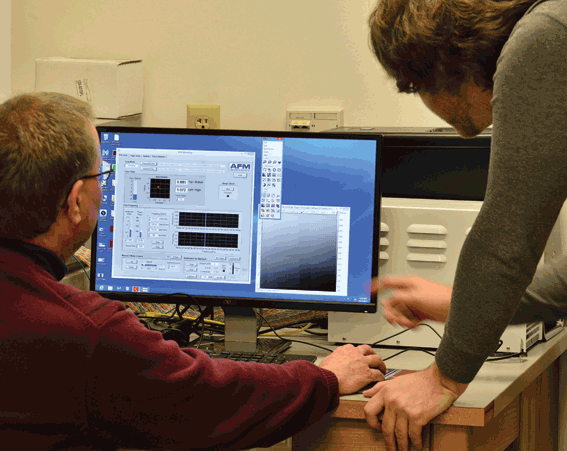
The big picture of Dr. Tim Corrigan’s field of research starts with the very small. Most of what he does is on the nanoscale, in fact. A great deal of Corrigan’s materials science engineering research at Concord University was originally inspired by the events surrounding the attack on America on Sept. 11, 2001. While on the research faculty at the University of Maryland, Corrigan was tasked with research, funded by the National Security Administration (NSA) that could improve the signal of biosensors in response to the fear of biological warfare. If the signal on the biosensors could be improved, then scientists would have the ability to determine if there was a deadly substance in the air.
While his research was eventually halted by the NSA at the time, Corrigan is now in southern West Virginia and giving Concord’s students the research opportunity of a lifetime by continuing the work.
Corrigan and his students are working to attach quantum dots to a gold nanoparticle-DNA origami template to increase the light coming out of the quantum dot. The gold nanoparticles act like nano-antennas for the light, and the DNA origami allows the quantum dots and gold nanoparticles to be placed in specific positions with nano-size control.
Corrigan said that potential future applications of his research could include improved bioassays, solar cells or optical circuits. In the meantime, Corrigan has a goal that isn’t on the nanoscale. He wants to inspire, motivate and encourage students.
Read more about Corrigan’s background, accomplishments and research in the Winter 2015 of the Neuron.
To read about other West Virginia scientists who have been spotlighted in The Neuron, visit the Neuron page of the Library for past issues.
If you’d like to be added to mailing list for the print issue of The Neuron, email Editor Amanda Ramey at amanda.ramey@wvresearch.org.